Lesser Toe, Mallet Toe and Hammertoe Solutions
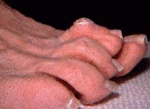 |
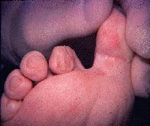 |
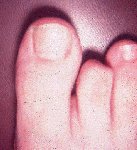 |
|
![]() Watch a video about Crossover Toe
Watch a video about Crossover Toe
Lesser toe deformities are commonly associated with poor footwear and are seen more commonly in women than in men.
They are also more common in older patients.
A hammertoe most commonly involves the second toe. A hammertoe is a deformity in which the toe is curled with the tip bent downward.
A mallet toe is a similar deformity that occurs at the tip of the toe. Pain develops as the toe strikes the tip of the shoe and often a callus develops. In some cases, an ulcer or an infection may result in continued pressure in this area.
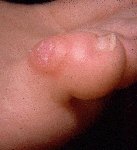 |
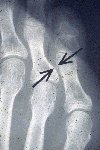 |
A hard corn can develop on the outer aspect of the fifth toe and is usually due to pressure from a shoe.
Soft corn can develop in one of the web spaces between the toes and is caused by the pressure of one toe against the bony prominence of another toe.
A whitish, macerated painful area will develop that is exquisitely tender to touch.
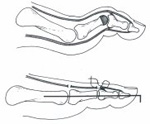 |
 |
Treatment of lesser toe deformities is aimed at relieving pressure. If these areas can be padded and the pain relieved, then this conservative treatment will be adequate.
Where padding is unsuccessful, utilization of shoes with only a slight heel with a toe box that is sufficient to keep pressure off the toes is recommended. Where pads and footwear are unsuccessful, surgical intervention may be considered. For hammertoes and mallet toes, resection of the bony prominence and straightening of the toe may relieve discomfort. Often a small metal pin is placed in the toe in order to reinforce the correction and is removed later in the office.
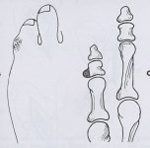 |
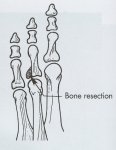 |
Hard corns and soft corns are usually treated by removing the bony prominence and occasionally a metal pin is used to stabilize the toe.
